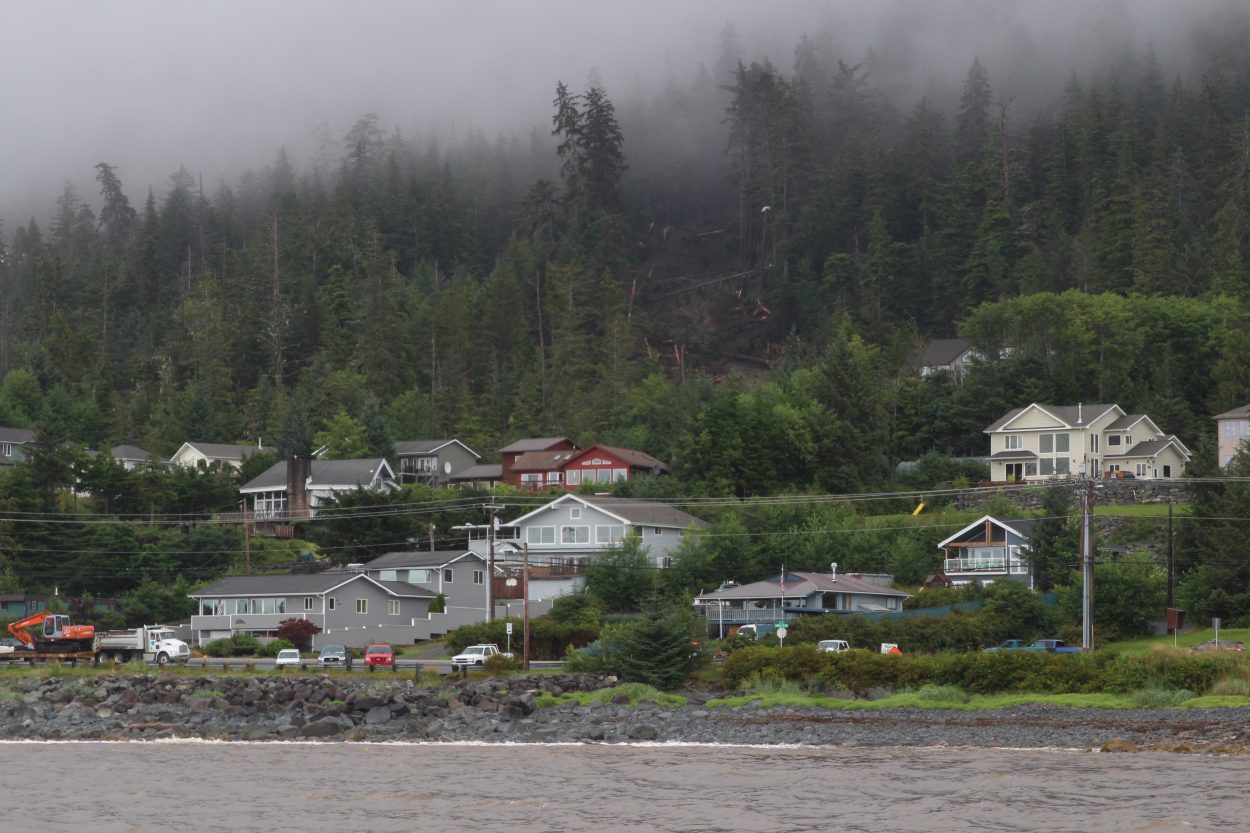
On Friday, Governor Bill Walker issued a disaster declaration for Sitka, in response to seven landslides on August 18th. The slides killed three men and caused extensive damage to private and public property, including city roads and utilities. In a letter to the legislature, Walker said he would cap relief at $1 million for the moment. Individual assistance is also available. (Rachel Waldholz/KCAW photo)
On Friday, Governor Bill Walker issued a disaster declaration for Sitka, in response to seven landslides on August 18th. The slides killed three men and caused extensive damage to private and public property, including city roads and utilities.
“It looks like a lot of our costs to date in responding to the emergency will be covered, both labor and contractors,” said City Administrator Mark Gorman. “So we are very, very encouraged by this declaration.”
In a letter to the legislature, Walker said he would cap relief at $1 million for the moment, but that the incident is ongoing and total recovery costs are unknown. According to Gorman, the cost of emergency response alone is estimated to be over half a million dollars.
“We mobilized the contractor community. We had numerous excavators out there and heavy equipment. That comes at a very high price tag,” said Gorman. The city will likely be reimbursed for theses costs.
The Disaster Relief Fund is divided up into two categories. The biggest portion – called the Public Assistance (PA) Program – is earmarked for critical infrastructure, like repairing roads and restoring utilities. Debris clean-up is also included.
A smaller portion includes funding for affected individuals and families, available through the Individual and Family Grant (IFG) Program.
“The maximum dollar amount for the individual family grant program is $16,450,” said Jeremy Zidek with the Division for Homeland Security and Emergency Management, with implements disaster assistance in Alaska.
The IFG program provides financial assistance to people who suffered damage to a primary residence, primary mode of transportation, or to defray the cost of medical, dental, and funeral needs.
It also includes a temporary housing program. “So, if a family of five had a three bedroom home, we would look to give them a three bedroom home that would suffice for their family and be similar to what they had before the disaster,” Zidek said.
However, Zidek added that houses under construction, which includes a handful of damaged properties in the Kramer avenue area, will likely not qualify.
“[Individual assistance] is a program of last resorts. When people don’t have any other assistance to turn to, they can turn to the state program,” said Zidek. “And in the case of a homeowner that has another home to go and reside in, that becomes what they need to do and not use the state’s individual family grant program.”
One population that may qualify for state funding, however, is local businesses. According to Zedick, if a minimum of five businesses are impacted, they may request assistance in the form of a small, 1 to 2% interest loan.
State officials will be in Sitka tomorrow (09-02-15) and Thursday (09-03-15) to walk city officials and families through the process of procuring disaster relief funding. A verification team with the Division of Homeland Security has reached out to some affected Sitkans already, but Zidek said there are many who still qualify and should apply.
Sitkans may apply to the individual and family grant (IFG) program by calling 1-855-445-7131 Monday through Friday (9 a.m. to 4 p.m.) or apply online at ready.alaska.gov. The deadline to apply is October 26th.
The state requests that applicants have the following information with them:
- Description of damages and/or losses
- Home ownership documentation
- Insurance information
- Personal identification
- Proof of occupancy (utility bill)































